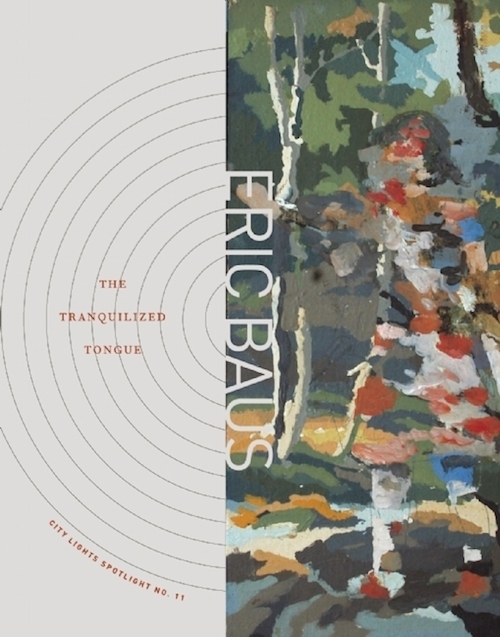John Yau Illuminates Eric Baus's Fourth Book, The Tranquilized Tongue

Fourth time's the best yet, or so says John Yau about Eric Baus's newest book, just out from the City Lights Spotlight Series. For Hyperallergic, Yau writes of The Tranquilized Tongue's compact prose poems that they comprise "a collection in which impossible particulars are stated as incontrovertible facts." More:
With each proposal (sentence), Baus incrementally defines and redefines the perimeters in which his particulars will unfold. First, the word moon is regarded as a living and material body with an outside and inside (“intestines”) that is an inherent part of the king’s bodily fluids (“saliva”). It is in this place (the mouth) where the word “assembles its intestines,” its guts. In the second line (“The letters cried.”), Baus underscores that words are made of both graphic symbol (letters) and sounds (“cried”). The individual sounds (“birth of each letter”) spawn “one hundred films” (multiple images). Sounds, the poet goes on to write, bounce back (“echo”), while leading to similar sounds.
Baus defines the poem as a chamber (“illuminated egg” and mouth) whose boundaries have not yet been reached, as well as a bricolage constructed from different categories of things (saliva, films, and nerves, among them). Made as much of matter as of sound, it is an acoustical chamber where words, sounds, letters and images are constantly emerging, intermingling, echoing, and changing into other words, sounds, letters and images. And just as the mouth can be the illuminated egg or chamber where these possibilities are born, it can also dissolve (”atomized”) the line or string of syllables. This is a world of unpredictable and miraculous change, a world that is simultaneously philosophical and alchemical, an inseparable mixture of factual propositions and flights of fancy.
In his insistent use of the declarative “The,” Baus presents the reader with propositions, which is likely to bring to mind Ludwig Wittgenstein’s book, Tractatus Logico-Philosophicus (1922). In that book of numbered propositions, the reader encounters the following three declarations:
The world is everything that is the case. The logical picture of the facts is the thought. The thought is the significant proposition.
And what does the "poet of Synesthesia" do with ole LW? Read more at Hyperallergic.


